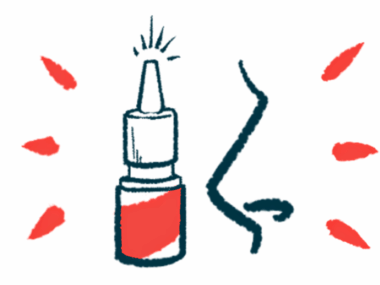Gilenya and Tecfidera Similarly Effective at Treating RRMS, Real-world Study Says
Written by |

Gilenya (fingolimod) and Tecfidera (dimethyl fumarate) are similarly effective at lowering the frequency of relapses and delaying disability progression in people with relapsing-remitting multiple sclerosis (RRMS), a real-world study from Switzerland reported.
These efficacy measures were also consistent whether patients were new to a disease-modifying therapy (DMT) like Gilenya and Tecfidera, or switching to either treatment from another DMT, its researchers wrote.
The study, “Comparative analysis of dimethyl fumarate and fingolimod in relapsing–remitting multiple sclerosis,” was published in the Journal of Neurology.
Gilenya and Tecfidera, both oral medications, are used as first-line treatments for RRMS in Switzerland (in the U.S., they’re first-line therapies for all relapsing MS forms). Gilenya is marketed by Novartis and Tecfidera by Biogen; generic versions of both medicines have also been approved.
Although their exact mechanisms of action differ, each is thought to act by reducing the inflammatory activity of the immune system. Individually, Gilenya and Tecfidera have also shown effectiveness in clinical trials; however, the comparative efficacy of these two MS treatments is rarely examined.
In this study, funded by the University of Basel, researchers analyzed data derived from a Swiss national insurance database. They identified 961 patients starting treatment with Gilenya between 2014 and 2019, and another 961 starting with Tecfidera over these five years.
Mathematical modeling was used to ensure that both treatment groups were similar in terms of demographics and clinical features prior to starting treatment. Both groups were about 70% female, with an average age of about 40, and an average disease duration of about eight years. Roughly 40% of had never been treated before; the remainder had previously received other MS treatments, primarily interferon-beta therapies.
Median follow-up time was just under one year. Over this period, no statistically significant differences in relapse rates or in disability status — either in terms of worsening or progression — were seen between the two treatment groups.
Further statistical analyses, including that accounting for previous treatments, also generally found no significant differences between these groups.
“In this observational, propensity-score matched analysis of a large MS cohort from Switzerland, we found that dimethyl fumarate and fingolimod had comparable effects on relapse activity and disability outcomes. This finding was consistent for treatment-naïve patients and those switching from another [treatment],” the researchers wrote.
At one year, significantly more people remained on Gilenya than they did on Tecfidera (87% vs. 81%), but discontinuation rates over the entire time analyzed showed no statistically significant differences between the two medications.
“[T]he difference [in continuation rates] between the groups diminished after the first year of treatment,” the researchers wrote. “Hence, we can assume that lack of tolerability of dimethyl fumarate early after treatment initiation was the strongest driver for discontinuation, as has been shown in previous studies.”
They noted that most people who stopped using Gilenya started on Tecfidera, and vice versa.
“Unfortunately, information about reasons for treatment discontinuation were not documented in our registry,” the researchers wrote, acknowledging this as a study limitation.
The trial’s primary limitation is that it used real world data, rather than that from a clinical trial, meaning the data “was subject to unknown or unmeasured confounders similar to observational studies,” according to the researchers.
Because the study focused only on people in Switzerland, it is difficult to generalize the findings to other populations. The investigators also noted that MRI data — important for evaluating disease activity in MS — was not available for their study.
“Our observational study adds further evidence to the comparable effectiveness of dimethyl fumarate and fingolimod in a real-world setting,” they concluded. “Further analyses, ideally including MRI data, are needed to assess the comparative long-term effectiveness of the two compounds.”





